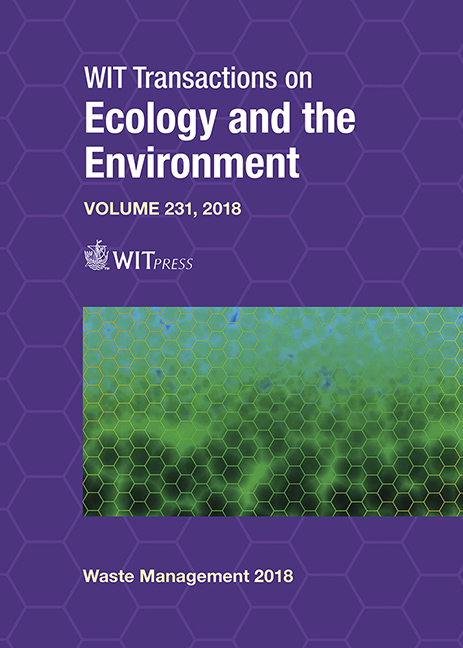AN INTEGRATED BIO-HYDROTHERMAL CONVERSION OF IRON-HYDROXY-SULFATES INTO HEMATITE: ENDEAVOUR TO 4R’S
Price
Free (open access)
Transaction
Volume
231
Pages
12
Page Range
213 - 224
Published
2019
Paper DOI
10.2495/WM180201
Copyright
WIT Press
Author(s)
SRADHANJALI SINGH, MALAY KUMAR GHOSE, LALA BIHARI SUKLA, SANJEEV KUMAR GOYAL
Abstract
Iron being a common impurity in hydrometallurgical operations; create significant difficulties during the recovery of other bivalent base metals. High content of iron in the form of oxides and metals in these processes could be solved by producing iron oxide pigments, which can be successfully converted into valuable raw material for paint, cosmetic, pharmaceutical, dye, and chemical industries. Furthermore, it could easily and economically generate additional revenue to develop the infrastructural facilities, the operation and maintenance costs required for full functional operational plant and certainly add value to the economy of these sectors. In above context, an attempt was made to convert the iron-hydroxy-sulfates formed in the leachate of the tailing pond of iron ore mine, Odisha into hematite. The process flow sheet encompasses biological followed by hydrothermal route to attain 100% pure hematite. Prior to hydrothermal conversion, complete ferrous oxidation was ensured in a 2.5 L of stirred tank batch bioreactor. Precipitates were generated at room temperature by the addition of either a concentrated NaOH/Ca(OH)2 until the pH attained the desired value. The ferric rich slurry thereafter converted to hematite in a 2.5Lit of SS grade high pressure vessel reactor (Stainless Steel grade 316) for 5 hrs at 400 rpm, 180°C, 1.34 MPa. The XRD pattern shows only the presence of iron oxide (Fe2O3) (PANalytical Empyrean Series 2\X’pert high score: -98-017-3654) which was well validate by SEM-EDX analysis for elemental identification and quantitative compositional information (CARL ZEISS, model-EVO18). Particle size analysis were also carried out using Malvern hydro mastersizer (model: 2000M) and UV-DRS analysis.
Keywords
iron ore mine, tailing pond, bio-hydrothermal conversion, commercial, viable, hematite





